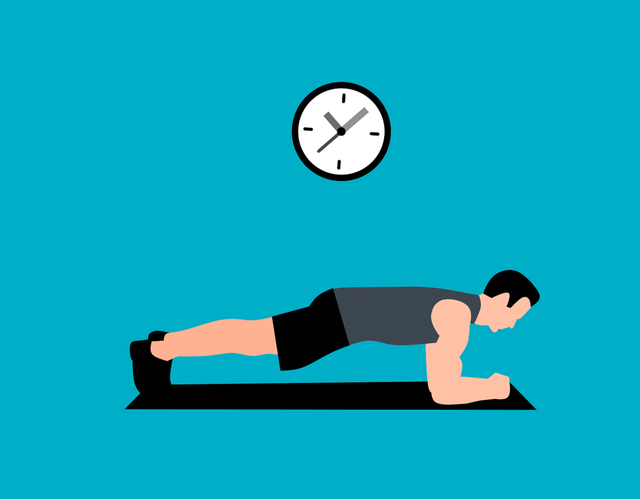
Regular exercise and sport can protect against cardiovascular diseases, among other things. A new meta-study has now identified exercises that are particularly effective in preventing high blood pressure.
What forms of exercise help to lower blood pressure? British researchers from Canterbury Christ Church University investigated this question. They analyzed the effectiveness of various fitness exercises in a so-called meta-study, in which the results from 270 clinical studies were evaluated. Data from around 16,000 subjects were therefore included in the meta-analysis.
The scientists found that so-called isometric exercises in particular have a positive effect on blood pressure. They published their findings in the British Journal of Sports Medicine.
In isometric training, muscle groups are contracted without movement. This means that the muscles are not shortened or stretched. Overall, the researchers compared the effects of isometric exercises with endurance sports (aerobic training), strength sports (dynamic resistance training) and high-intensity interval training, also known as HIIT.
Lower blood pressure and thus the risk of heart attack or stroke
According to the results of the meta-study, all exercises significantly reduce resting blood pressure after at least two weeks of training. However, the positive influence of isometric exercises stood out: With them, the systolic pressure could be reduced by 8.24 mmHg – i.e. the blood pressure at which the heart muscle contracts and the body is supplied with oxygen-rich blood. A reduction of 4 mmHg was observed for the diastolic pressure. It occurs when the heart muscle relaxes again.
For comparison: The data analyzed for HIIT training only showed a reduction in blood pressure of 4.08 and 2.5 mmHg, respectively. If blood pressure is too high, the risk of a heart attack or stroke increases. According to the German Heart Foundation, it is estimated that every third person in this country has high blood pressure.
Speaking to the BBC, Jamie O’Driscoll, a sports scientist and co-author of the meta-study, explained the effect of isometric exercises as follows: “They increase tension in the muscles when held for two minutes and then cause a sudden blood flow, when you relax again.” But don’t hold your breath during the effort, O’Driscoll says.
These exercises are particularly effective
According to the study, examples of isometric exercises are planks or wall sitting.
Planking is in a similar position to push-ups. But instead of pressing the torso from top to bottom and back up again, it is statically supported by the forearms. The entire body then forms a straight line. Depending on your training level, you remain in this position for several seconds or minutes.

When doing a wall squat, you stand against a wall with your back straight. Bend your knees until your thighs are parallel to the floor, with your calves forming a right angle. Here, too, one holds the position.
But not only exercise is good for blood pressure. A few other factors have a positive influence on it: such as not drinking alcohol and cigarettes, a low level of stress, avoiding being overweight or eating a lower-salt diet. Anyone with questions or concerns should always seek medical advice.
Sources used: British Journal of Sports Medicine, BBC